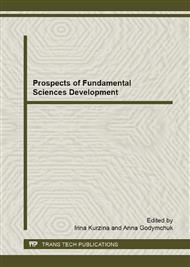p.430
p.436
p.441
p.447
p.455
p.460
p.465
p.471
p.474
Mass Determination Algorithms Using High Energy Digital Radiography
Abstract:
The paper presents foundations of the algorithm of processing primary radiographic images of large-size cargoes that allows determination of their masses. Two possible approaches to form definite algorithm of processing radiographic information were analyzed. The choice of the approaches depends on the completeness of information about the test object. The first approach to design mass determination algorithm is connected with inspecting industrial products. Industrial inspecting products are characterized by a completeness of information about the material, its structure, the geometry. The information augmented by selecting maximum X-ray energy and calibrating by test object allows determination the mass of inspecting object by the only radiographic image with high precision. The second approach is caused by indeterminacy and incomplete information about inspecting object. This case is typical for problems of cargo inspection. Corresponding algorithm modification is based on using dual-energy X-ray imaging that allows determination of the effective atomic number of test object and provision of the required precision of mass estimation.
Info:
Periodical:
Pages:
455-459
Citation:
Online since:
February 2015
Price:
Сopyright:
© 2015 Trans Tech Publications Ltd. All Rights Reserved
Share:
Citation:


